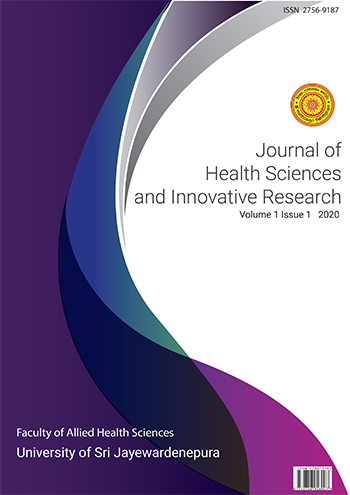Health Related Quality of Life of Children with Thalassemia Major in Two Selected Hospitals in Sri Lanka
DOI:
https://doi.org/10.31357/jhsir.v1i01.4773Abstract
Introduction: Thalassemia is an inherited hemoglobin disorder. There are two types; thalassemia major and minor. Thalassemia major directly affects children’s physical, emotional, social and school functions. Health Related Quality of Life (HRQoL) is an important indicator to assess the health of human. Methods: A cross sectional study was conducted using 60 children (age 2-12 years) with thalassemia major who attended clinics in two selected hospitals in Sri Lanka from July to September 2018. Demographic data and risk factors were collected using a self-administered questionnaire. HRQoL data were collected using the Pediatric Quality of Life Inventory Version 4.0 Generic Core Scale. Data were analyzed using SPSS. Results: Mean values of the total functioning scores of physical, emotional, social and school were 89.42 (±9.20), 87.83 (±10.43), 95.00 (±7.53) and 78.75 (±14.13) respectively. Age of the children was significantly associated with emotional functioning (p=0.046), school functioning (p=0.023), psychosocial health (p=0.021) and the total summary score (p=0.006). Total number of blood transfusions per year of the patient was significantly associated with physical functioning (p=0.002), psychosocial health (p=0.045) and total summary score (p=0.034). Conclusions: Age and the total number of blood transfusions per year significantly affect the HRQoL of children with thalassemia major. Gender, type of iron chelation and age at first blood transfusion did not affect HRQoL of the children.
Keywords: HRQoL, Thalassemia major, Haemoglobin disorder



